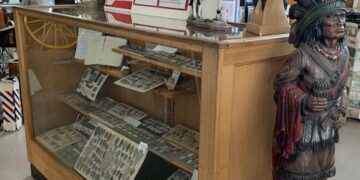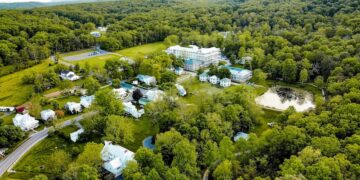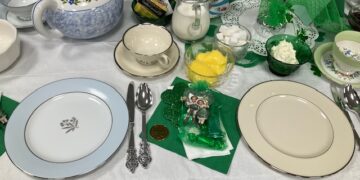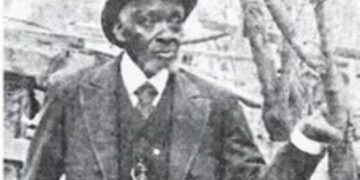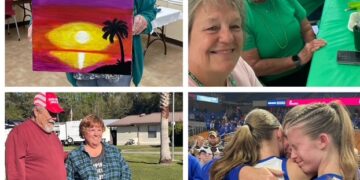Years ago, folks thought there were witches in Brocks Gap who knew spells to cause mischief for their neighbors. Lewis Yankey recorded some stories and explanations about witches. He noted that women who were unusually keen-minded and had penetrating insight into human affairs and motives were often called witches. In other words, if a woman was smart and too independent, she must be a witch.
They also knew a lot of herbs with powerful properties, like henbane, hemp, and belladonna. Some of those herbs could cure diseases, but Lewis wrote that folks thought some witches gave potions (or witches’ brew) to their boyfriends to get a marriage proposal. Some local people, like some of the Smiths, may have had some ESP or extrasensory perception abilities. For instance, Vincent Smith told me that he could sense if a woman was pregnant, even if there were no outward signs of pregnancy. In earlier days, that ability might have scared his neighbors if they learned of it.
According to Lewis’s notes, Katherine Nesselrodt Dove (1823-after 1900) was known as “Kate the Witch.” When visiting Paul Smith’s home, Katherine would not step across a broom which was lying across the doorway, thus strengthening her position as a witch because everyone knows a witch cannot step across a broom. After writing about Kate, Lewis added that witchcraft “was all bologna” indicating that he didn’t believe it.
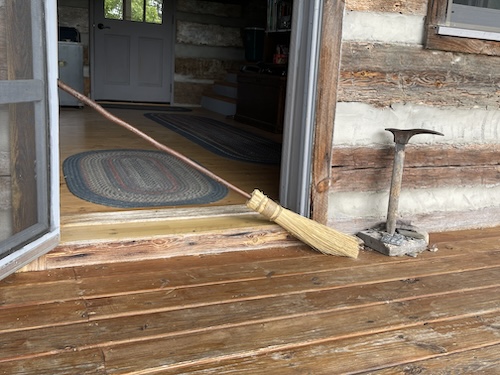
Katherine’s sister-in-law, Harriett Dove Runion (1828-before 1880), was also said to be a witch. Her husband Sam Runion lived with her for a while but left because of the superstition that she was a witch. There was a rumor that a Bennetts Run woman had practiced witchcraft in her younger days but gave it up when she married. When her husband died in the late 1930s, she told her visitors that, “Now that Pap’s dead, I guess I’ll go back to witchin’.”
In his Shenandoah Voices book, folklorist John Heatwole explained that witches were often tolerated in society because of their family ties. (Kate and Harriett were from prominent Bergton families). Or because no one wanted to make a witch mad. People didn’t want to cross a witch, but they definitely steered clear of male witches, sometimes called warlocks or sorcerers. In fact, John learned that even in our lifetime, some people were scared to say the name of a warlock because of genuine fear of consequences. I found this out first-hand. I enjoy presenting a folklore program including some of the Brocks Gap witch stories. About fifteen years ago, I was rehearsing the program for my mother-in-law and friend. When I came to the witch stories, her friend interrupted to say that great-grandfather was a warlock. Once while at the dinner table, she said, her sister mentioned his name and asked her parents about him. Suddenly, the curtains began moving, as if a strong wind had come through the windows, although they were all closed. Her sister never again said their ancestor’s name out loud.
There were protections against being bewitched. When making butter from cream, some housewives around Broadway whipped the cream vigorously, thinking that if a witch had hexed it, the witch would be whipped as well as the cream. Gunsmiths sometimes engraved a ring around a rifle’s bore opening to prevent it from being hexed.
Witch doctors in the community knew good spells to counteract a witch’s spell. About 1994, John Heatwole asked me for a photograph of Sarah “Mam” Fawley 1842-1925. She was a witch doctor, John said, and he wanted her photo for his next book Shenandoah Voices. Having never heard of local witches or witch doctors, I took offence at his calling her a witch doctor. It turned out that my Sunday School Superintendent, Maynard Hoover, had told him that Sarah was a witch doctor/granny midwife.
John explained that witch doctors were good because they knew spells to cure diseases or counteract witches’ bad spells. I checked around in the community and learned that in addition to being a midwife, Sarah Mam knew a spell to cure thrush in babies’ mouths. John’s folklore research found that the thrush spell involved saying words from the Bible, running a straw from horse manure around the baby’s mouth, and hanging the straw in the back of the chimney. Granny lady Minnie Ritchie 1890-1964 knew the spell for getting children to grow normally. Other people that I have known in my lifetime knew spells for curing warts or relieving pain from burns. It seemed that local people still recalled stories of granny ladies (or witch doctors) who knew good spells, but stories of witches and bad spells have just about faded from community memory. It’s probably for the better that bad stories about particular neighbors have disappeared from memory. What do you think?














